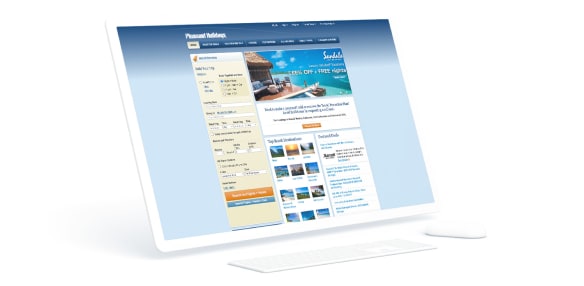About Toronto
Although the famous Niagara Falls are nearby, Toronto isn't a city with a checklist full of attractions. But its summer festivals, the spicy corners of its markets, the beachfront boardwalks and the music pouring out of its neighborhood eateries will slowly and surely seduce you.
This is Canada's business capital and largest city: a clean, safe and vibrant metropolis where real estate prices are high and blood pressure levels are low. The center of Anglo-Canadian culture and media, it's also one of the great ethnic melting pots of the world.
Explore Canada
Toronto, Canada
What To Do
Toronto is built for walking. The two-hour Humber River Discovery Walk is an interesting route, but true outdoor enthusiasts will enjoy the Don River Valley ravine walk. Just east of the beach area, Scarborough Bluffs has several parks with paths leading down to the lake and up to sweeping views.
What To See
Toronto is an experiential city that reveals its secrets slowly. Apart from icons like the cloud-brushing CN tower, the best experiences you'll have in Toronto come from wandering through its ethnically flavored neighborhoods, checking out Victorian architecture and quirky museums.
Shopping
In Toronto, the only question is where not to shop. Each ethnic neighborhood and major thoroughfare has its own grab-bag assortment of shops, satisfying the quirkiest and most conventional of shoppers. The city's high taxes shouldn't discourage you - refunds are often to be found.
Nightlife
Toronto's nightlife keeps everyone busy long after dark, with plenty of entertainment during the daylight hours, too. In summer there are free outdoor festivals going on all the time. Even without any caffeine in their Mountain Dew, Torontonians keep up a heady level of carousing.
Events
All of Toronto's main festivals and events take place between May and October, when there's little chance of snow and plenty of light by which to see them.
Summertime festivals begin with mid-June's Caravan, a nine-day cultural exchange between the city's ethnic groups. The annual Pride Week culminates in an outrageous out-of-the-closet parade on Church St. The excellent Downtown Jazz Festival attracts local and international players in June and early July. With scarcely a beat lost, Toronto's music scene segues neatly into the Toronto Bluesfest, enlivening the Harbourfront in early July.
Also in July, flags drop at the Molson Grand Prix. In August, Caribana, an ever-growing Caribbean festival, celebrates with a weekend of reggae, steel drum and calypso music and dance. Its finale, and main attraction, is a huge Rio-esque parade.
Come September, the internationally renowned Toronto International Film Festival has cinema buffs swooning in the aisles. And for the bookish at heart, the Harbourfront International Festival of Authors, in late September and early October, is the largest literary event of its kind anywhere.
Food and Drink
America calls itself a 'melting pot', but Canadians prefer the term 'cultural mosaic' for themselves. The metaphor is never more apt than when it describes Toronto's internationally-flavored restaurant scene. In the '70s, waves of immigration brought the world to local forks and fingertips.
When to Go
Toronto has a warm summer (June to mid-September) filled with festivals and events, making it the best time to visit. July and August can get muggy, however. Many visitor-oriented facilities, attractions and accommodations reduce hours or close outside of summer, but the ones that remain open almost always have reduced rates and smaller crowds. Fall (mid-September to late October) is crisp and beautiful - all of Ontario is renowned for its autumn colours. Toronto gets downright frosty in winter (November to March), with cold spells averaging between 2°C and -10°C (35°F and 14°F). Luckily, indoor arts (symphonies, theater, opera) and sporting events (especially ice hockey) are at their liveliest during the snowy season.
Entry Requirements
Citizens of dozens of countries - including the USA, most Western European and Commonwealth countries, as well as Mexico, Japan, South Korea and Israel - don't need visas to enter Canada for stays of up to 180 days. US permanent residents are also exempt.
Nationals of around 150 other countries, including South Africa and China, need to apply to the Canadian visa office in their home country for a temporary resident visa (TRV). The website maintained by Citizenship & Immigration Canada (www.cic.gc.ca) has full details, including office addresses and the latest requirements. A separate visa is required if you plan to study or work in Canada.
Money
Canadian Dollar
Getting Around
Despite its size, Toronto is a very walkable city and its grid layout makes it relatively simple to navigate. It has a good subway, bus and streetcar system, operating under the umbrella of the Toronto Transit Commission.
Traffic congestion and expensive parking makes driving a better bet for out-of-town excursions. Toronto's taxis are reliable, and in summer sweaty pedicabbies trawl the theater and Yorkville districts. Ferries will take you to the Toronto Islands, and GO Trains leave from Union Station for points throughout the Toronto suburbs.
Deluxe bicycle rickshaws pedalled by fit young women and men can be hired around downtown during summer. Fares for longer trips should be negotiated with the driver before boarding. Tip generously.
Taxis can be flagged on the street or you can find taxi ranks outside of hotels, museums, shopping malls and entertainment venues. Reliable companies include Crown Taxi (tel: 416 240 0000), Diamond Taxicab and Royal Taxi (tel: 416 777 9222), which has a fleet of wheelchair-accessible taxis.
The city center is pedestrian friendly, with leafy residential neighborhoods as well as retail strips.
Toronto has 50km (31mi) of on-street bicycle lanes and over 25mi of marked routes for bicycles. In-line skaters can use sidewalks, but it is illegal for cyclists to do so. Bicycles are allowed on some, but not all, ferries to the Toronto Islands; restrictions usually apply during peak periods.
The main subway lines are the crosstown Bloor-Danforth line, and the U-shaped Yonge-University-Spadina line which bends through Union Station. Stations have clearly marked Designated Waiting Areas (DWAs) monitored by security cameras and equipped with a bench, pay phone and an intercom link to the station manager; they are located where the subway guard's car stops along the platform
Streetcars are slower than the subway, but they stop more often (usually every block or two). Streetcars display their route number and final destination on both the front and rear cars. Routes are numbered in the 500s and streetcars roll on St Clair Ave and College, Dundas, Queen and King Sts (all of which run east-west). Bathurst St and Spadina Ave streetcars mainly run north-south, then turn at the lakefront west toward the Canadian National Exhibition (CNE) grounds (511 Bathurst) or east toward Union Station (510 Spadina). The 509 Harbourfront streetcar travels from Union Station along Lake Shore Blvd west to the CNE grounds.
Travel Tips & Tools


You will be transferred to our traditional site.
We are currently working on enhancements to this part of our website. A new version will be available soon. Don’t worry – switching over will not interrupt your booking.
Welcome to the all-new Pleasant Holidays booking experience !


You can now plan your next vacation with our exciting new booking engine. Some advanced features are still being developed, and selecting these options may require you to return to our traditional booking experience. Don’t worry – switching over will not interrupt your booking.
We've updated your online experience to make sure you can get your dream vacation. Since our makeover is still in progress, you may experience shifts from our traditional booking experience to our new one.
Contact us
Any questions ?
Our travel advisors will be happy to help!


























































